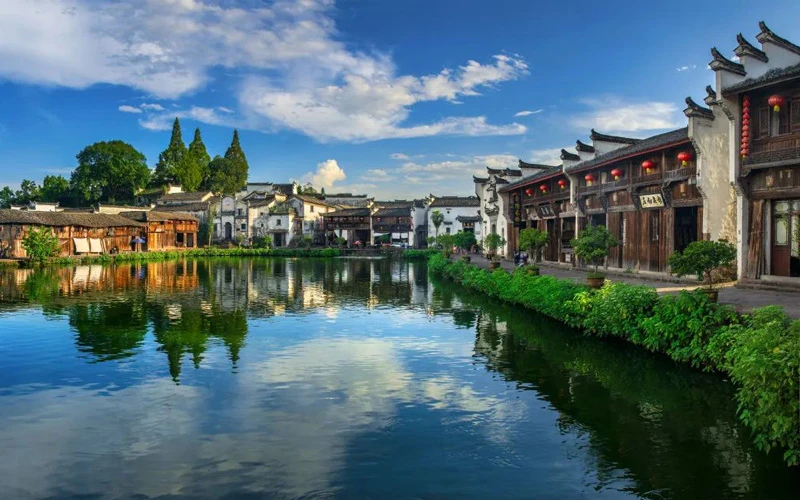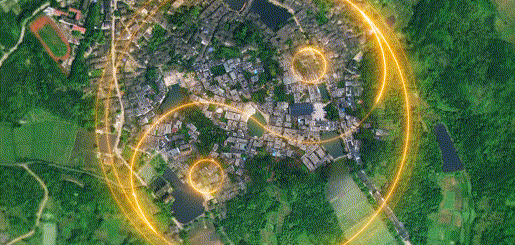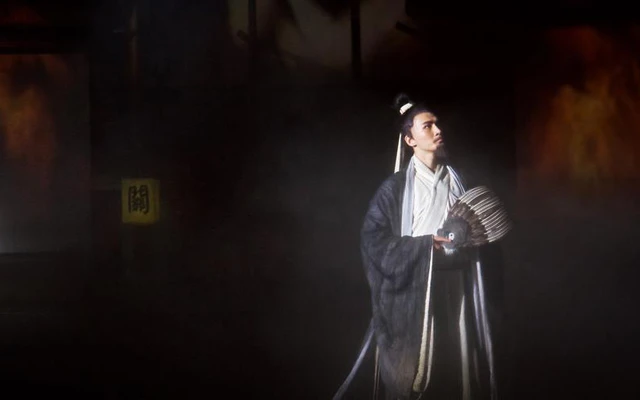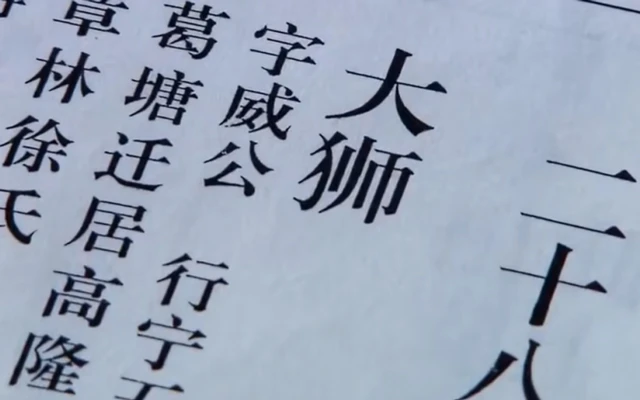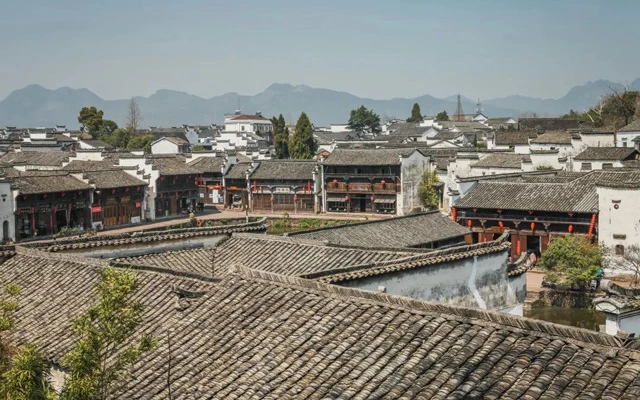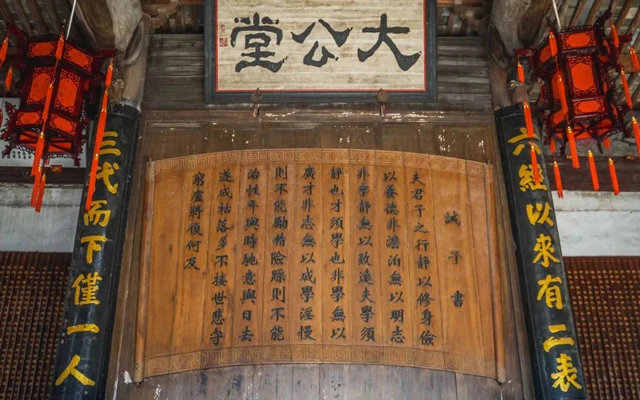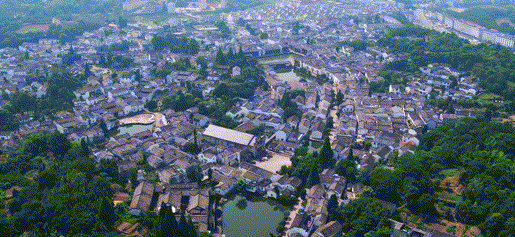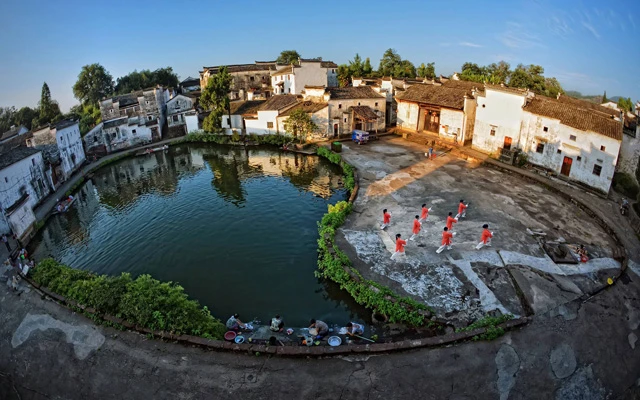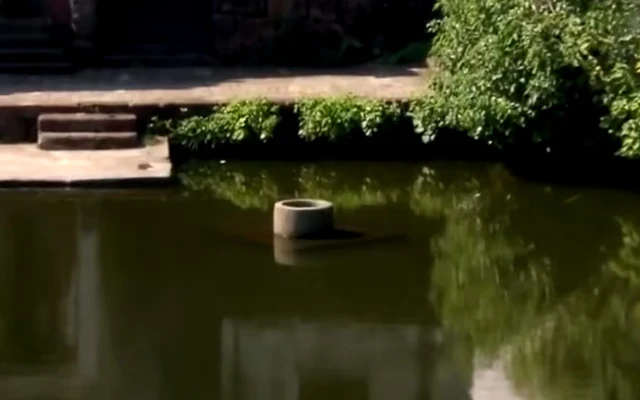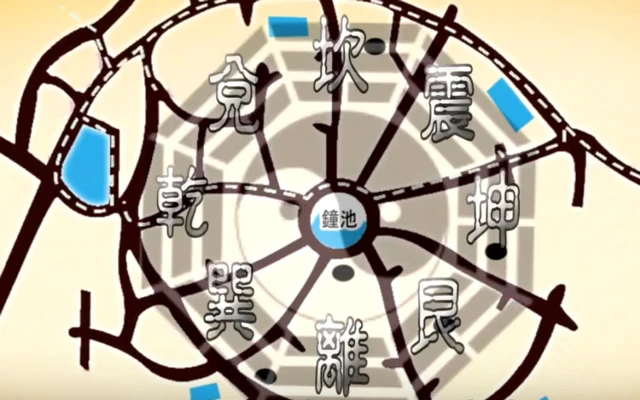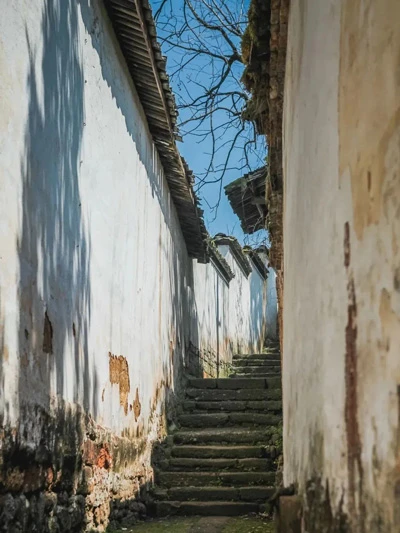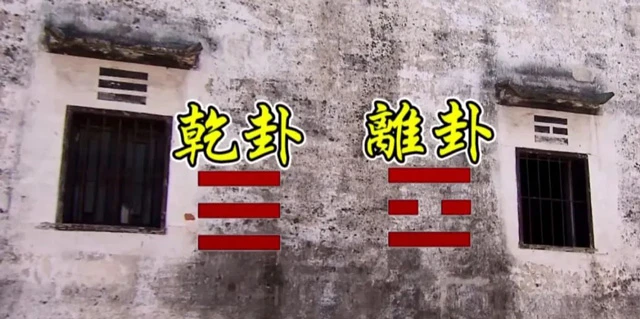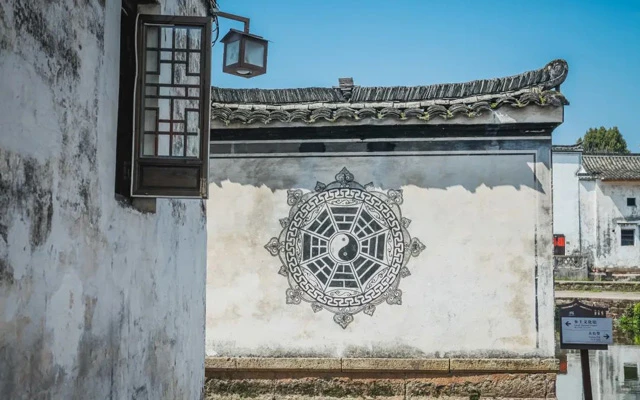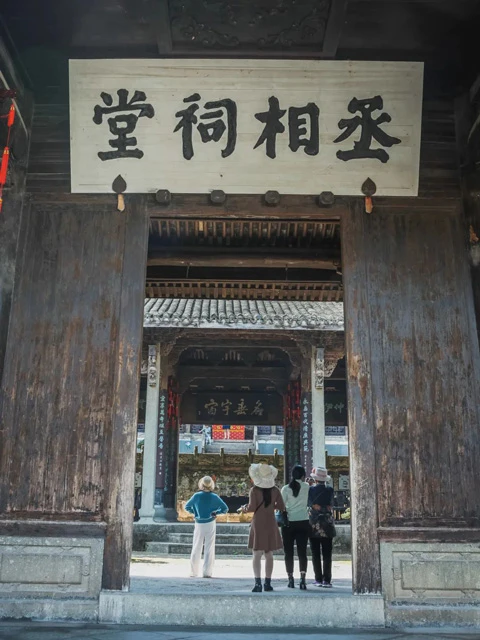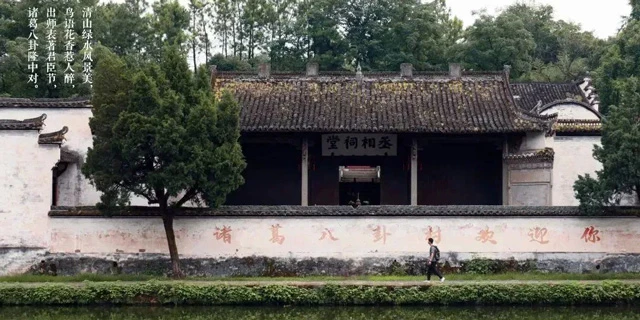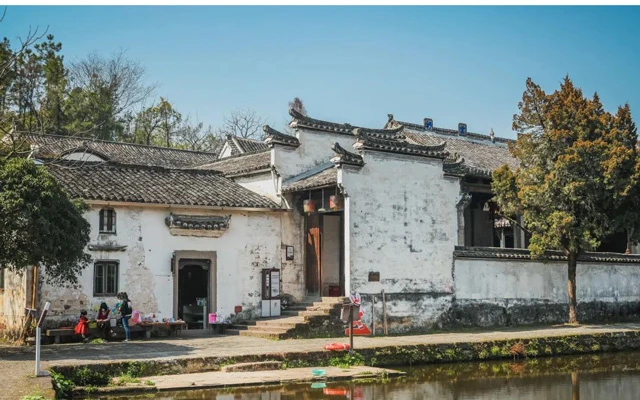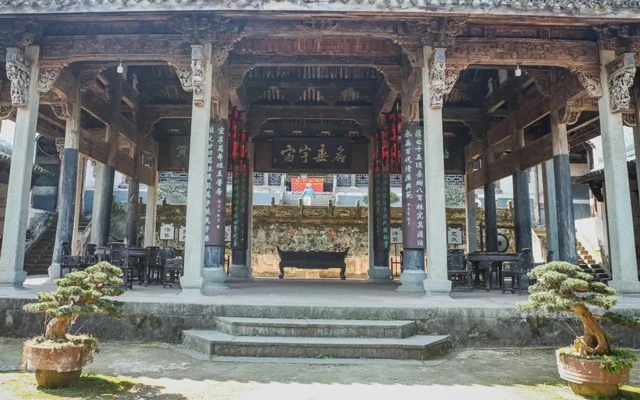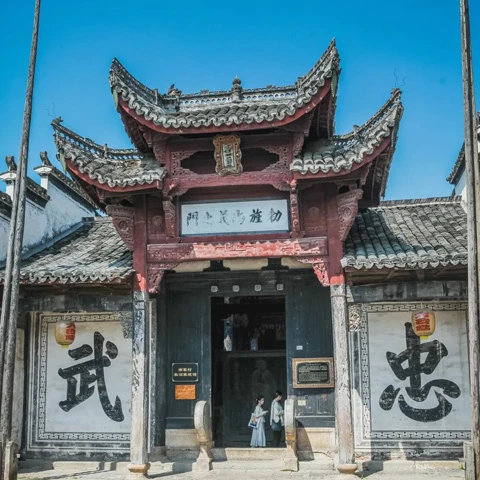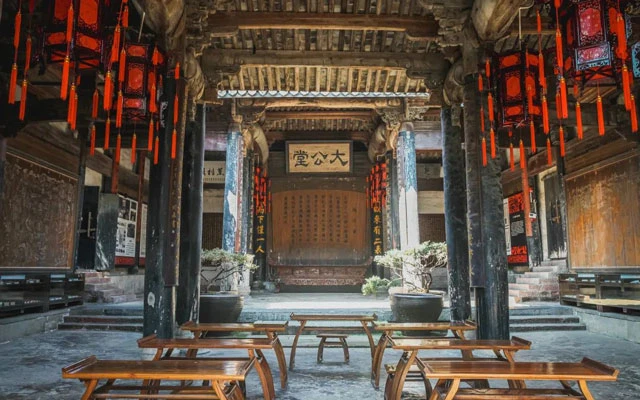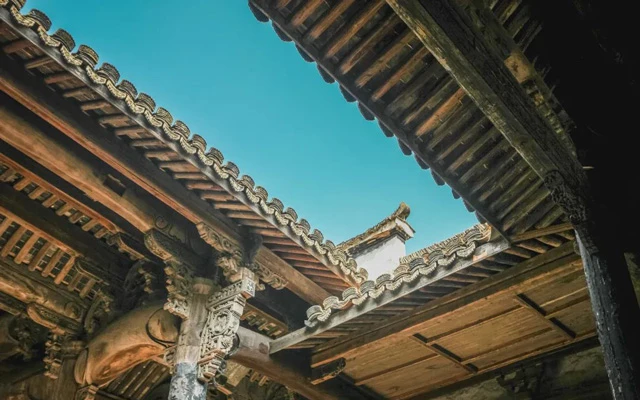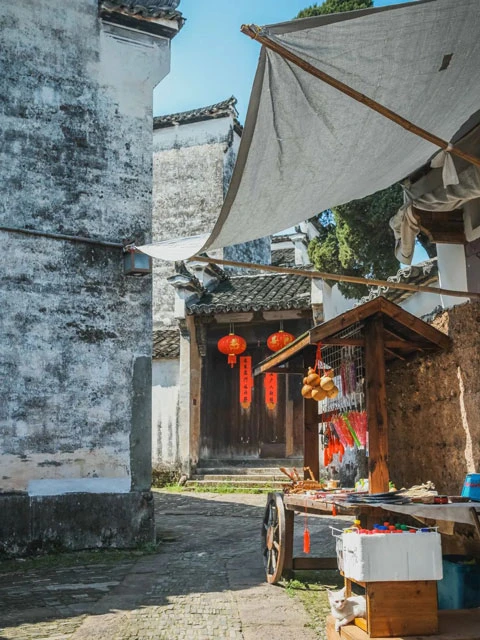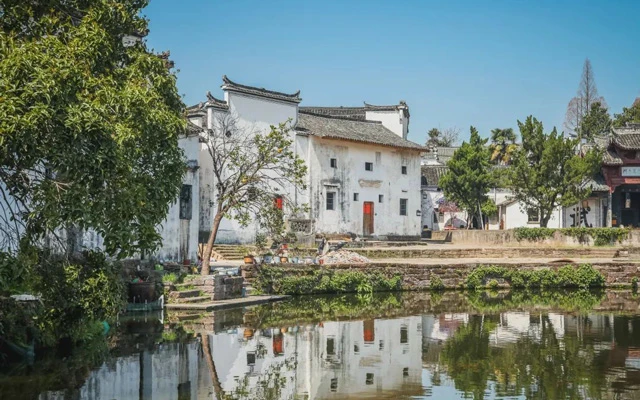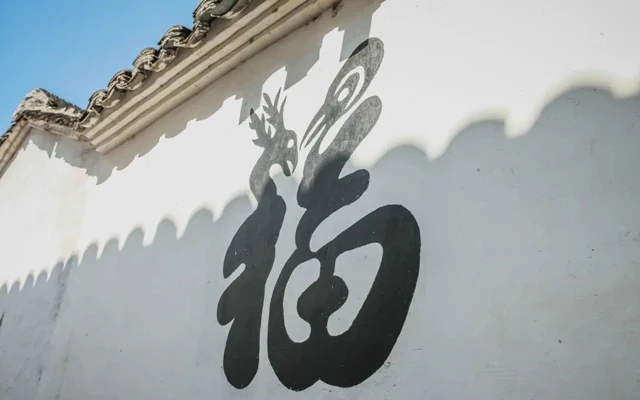The Three Kingdoms era was a legendary age. Although it lasted less than a hundred years in history, this period saw the emergence of heroes such as Cao Cao, Liu Bei, Sun Quan, Guan Yu, and Zhuge Liang. Their deeds have left a deep imprint on Chinese culture and are widely praised and celebrated. The three states of Wei, Shu, and Wu divided the country: Wei ruled the north, Shu occupied the southwest, and Wu held control over the south.
Surprisingly enough, within what used to be territory belonging to Wu lies the largest settlement of Zhuge Liang's descendants in China today - an ancient village with a rich legendary character called Zhuge Bagua Village (诸葛八卦村). There are various mysterious rumors surrounding this village: thieves who entered were said to become lost in a maze-like formation and could only surrender; some say that it is an auspicious place blessed with good feng shui which has kept it prosperous for generations. What kind of ancient village is this exactly? Are these rumors true or false? Let us explore further.
Resident of Bagua Village: Descendants of Zhuge Liang
Zhuge Liang (诸葛亮) was one of the most outstanding politicians and military strategists in Chinese history. With his intellectual prowess demonstrated through feats such as verbal debates against scholars from all walks of life (舌战群儒), borrowing arrows with thatched boats (草船借箭), capturing Meng Huo seven times (七擒孟获), and employing empty city strategies (空城计), he achieved remarkable military achievements for Shu Han. People were amazed by Zhuge Liang's talents but also admired his moral character; he was hailed as both an extraordinary genius throughout eternity and an outstanding statesman throughout eternity.
Looking back on the life of prime minister Zhuge, he wrote in his "Chu Shi Biao: "I was of humble origin, and used to lead the life of a peasant in Nanyang. In those days, I only hoped to survive in such a chaotic era. I did not aspire to become famous among nobles and aristocrats.".
Zhuge Liang was born in Yangdu County (now Yinan County, Linyi City, Shandong Province) and once lived as a recluse in Nanyang and Longzhong (today's Nanyang City, Henan Province and Xiangyang City, Hubei Province). Later on, he assisted Liu Bei in his expeditions across various regions like Hubei, Sichuan, Shaanxi. So what connection does Zhuge Liang have with Zhejiang? And why did his descendants choose to settle down and thrive in Lanxi?
To understand this story properly we must go back to the year 925 AD. This period marked the Five Dynasties and Ten Kingdoms era - a time of frequent dynastic conflicts and wars. Affected by chaos from central China battles at that time period, the 14th generation descendant of Zhuge Liang named Zhuge Lian (诸葛浰) came to Shouchang County in Zhejiang province for work as county magistrate where he passed away later on; thus his descendants settled here.
During the Yuan Dynasty (1271-1368), there emerged within Zhuge Liang's lineage an individual named Zhuge Dashi (诸葛大狮) who possessed exceptional skills in feng shui divination techniques. Determined to ensure prosperity for their family lineages' future generations, Zhuge Dashi decided it was necessary to utilize all their lifelong knowledge acquired about Feng Shui principles or geomancy so they could search for an ideal place.
This treasure trove of land was indeed found by Zhuge Dashi in Gaolong Hill, located in the western part of Lanxi. This area possesses abundant natural resources - mountains for firewood gathering, rivers for fishing, fields for farming, and a market nearby to facilitate trade. However, what truly attracted Zhuge Dashi was its intricate terrain.
Situated between hills and plains, with mountains and rivers to the north and west respectively,while on the east and south there stretches out a vast open plain all the way to Lan River - one of Fuchun River's tributaries. Such a configuration with backing from the mountains while facing water on both sides is highly esteemed by feng shui practitioners who consider it an auspicious place.
Zhuge Dashi skillfully applied his knowledge of Bagua formations (八卦阵) when designing and constructing their village; subsequently leading their clan members to settle here. Today, after more than 700 years have passed since then, Zhuge Bagua village is home to over 4,000 direct descendants of Zhuge Liang spanning across 47 generations as the oldest lineal generation member up until now is recorded being at its 55th generation.
"The conduct of a noble person involves cultivating oneself through tranquility and nurturing virtue through frugality. Without detachment there can be no clarity in purpose; without serenity there can be no achievement." These are words left behind by Zhuge Liang himself in his "Admonition to My Son". Though consisting only of 86 characters, they convey profound meaning that deeply resonates with people's hearts. Even young children attending kindergarten within Zhuge village are able to recite this text fluently. The village residents have always regarded the "Admonition to My Son" as their ancestral code, and they diligently practice the life philosophy it conveys in everything they do.
The Mystery of the Layout of Zhuge Village
The Bagua layout in Zhuge village is not only known for its legendary bloodline, but also for its astonishing arrangement. How did a village cleverly integrate with the Bagua? And how did it avoid becoming a chaotic place amidst the turmoil?
This seemingly ordinary Jiangnan village hides its secret in the center - the Zhong Pond (钟池). The topography of the Eight Trigrams village is higher on all sides and lower in the middle, resembling a pot. When it rains, water gathers at the bottom of this pond.
The profound mystery of Zhong Pond lies in its half-water and half-land composition, similar to Yin-yang Tai Chi diagram. To further represent this concept, there are two wells: one near the northern land area and another near pond in the south, symbolizing eyes within Tai Chi.
Radiating from Zhong Pond, eight stone paths intertwine throughout the village like an open yet closed network. They form the backbone of Zhuge village while dividing residents into eight regions: Qian (乾, heaven), Kun (坤, earth), Zhen (震, thunder), Xun (巽, wind), Kan (坎, water), Li (离, fire), Gen (艮, mountain) and Dui (兌, lake). Within this labyrinth-like Eight Trigrams Village lie over two hundred ancient houses built during Ming-Qing dynasties. As most of these residences were constructed on undulating slopes that ascend from front to back.
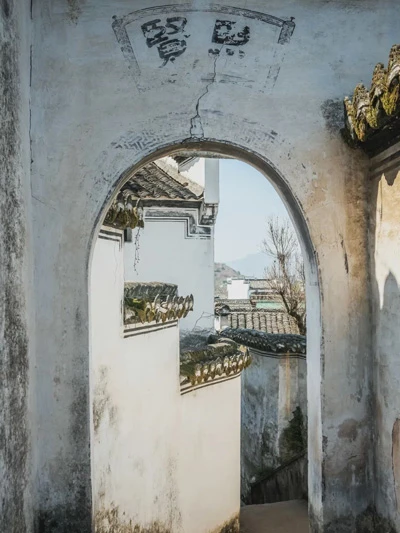
The ingenious design of Feng Shui's Eight Trigrams can be found hidden in various corners of the village. For example, the windows of houses bear trigram symbols. The combination of Qian Trigram on the left and Li Trigram on the right represents "Heaven Fire Unity", which signifies harmony and unity among people in the principles of sixty-four hexagrams.
Furthermore, if we observe the entire village, Zhuge village is surrounded by eight small mountains that correspond to different directions of ancient Eight Trigrams, forming a natural barrier. With such arrangements combined with the village's layout, an intricate "Trigrams within Trigrams" composition emerges.
How to Visit Zhuge Bagua Village?
First-time visitors to Zhuge village are often curious about the layout of the village. However, upon entering the village, people will be amazed by the grand and exquisite architecture.
The Prime Minister's Shrine
To understand Bagua village, visiting the Prime Minister's Shrine is a must. Located northeast of Zhong pond, this shrine was built during the Wanli period of the Ming Dynasty. It serves as a place to commemorate Zhuge Liang and is also the largest and most elaborate shrine in the village. But when you try to enter it, you will be surprised to find that its main gate is blocked by a low wall. The only way in or out is through side doors in this peculiar arrangement.
As it turns out, this piece of land originally belonged to a family surnamed Wang. When constructing the shrine, they observed Feng Shui principles based on Bagua positions. The shape of the shrine resembles a crouching tiger drinking water from afar. However, for their neighbors across from them who were surnamed Wang, it was believed that there would be excessive negative energy.
In order to show gratitude for acquiring this land from his fellow villagers with surname Wangs' permission, the descendants of Zhuge made changes in its design during construction: they added an outer wall outside blocking off direct view towards their home and changed entrance location at both sides so as not clash Feng Shui with those living across them who had surname 'Wang'.
Stepping into the shrine interior allows one to feel its ancient simplicity and solemnity. Exquisite wood carvings and stone sculptures can be found throughout - beams, fascias, columned windows - all beautifully crafted; truly awe-inspiring sights await every corner.
The central courtyard boasts majestic splendor while four pillars are made respectively from cypress wood, zelkova wood, paulownia wood, and soapberry wood. The homophonic meaning is "all children share the joy of spring". As the ancestral shrine of the Zhuge family in Bagua Village, it holds festive celebrations every year on April 14th (Zhuge Liang's birthdate) and August 28th (Zhuge Liang's Memorial Day).
Da Gong Tang
During the Ming Dynasty, northwest of Zhong pond, descendants of Zhuge built the Da Gong Hall - a ceremonial building that serves as a memorial hall dedicated to Zhuge Liang. It is said to be one-of-a-kind in Jiangnan region. The Grand Assembly Hall can be described as the most magnificent and eye-catching architecture in the entire village.
Above its main entrance hangs an inscribe dedict plaque with characters "救旌尚义之门" which means "the gateway to salvation and upholding righteousness", during Ming Dynasty, Zhuge descendant named Zhuge Ji once opened granaries outside this grand assembly hall, and his deeds were rewarded by imperial decree.
On both sides of the door are characters for "忠, loyalty" and "武, warrior." All these elements have significant meanings. This is because Liu Shan, later Emperor Shu who bestowed upon Prime Minister Zhuge posthumous titles such as Zhong Wu Marquis (忠武候). That explains why there are characters for loyalty and warrior on this gate.
The architectural artistry inside the Da Gong Tang is exquisite, featuring typical beams and pillars style construction. The carvings within are even more splendid. The design of four-beam eight-pillar pavilion is particularly rare, since only families holding positions like prime minister could build such structure. The whole building exudes elegance combined with grandeur.
Residential Houses
There are over two hundred residential houses scattered throughout Bagua Village. These houses were mostly constructed during the Ming and Qing dynasties. They embody the architectural style of Huizhou with blue bricks, grey tiles, crow-stepped gable, fat beams, stout pillars, and small side rooms.
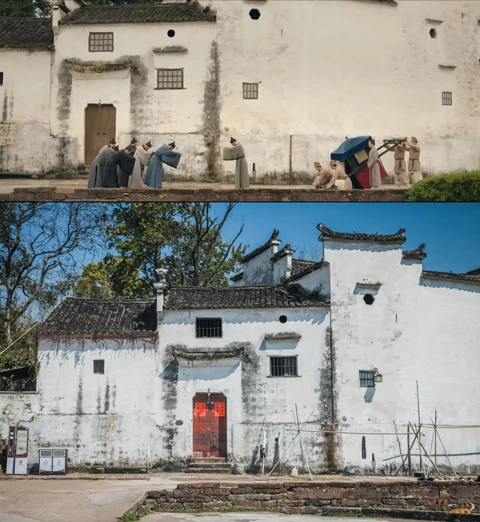
The drama Under the Microscope was set here
Adhering to the ancestral instruction of "being a good minister or a good doctor", descendants of Zhuge have gained fame in traditional Chinese medicine culture. Running their pharmaceutical businesses, they are well-known for providing genuine medicinal herbs and honest transactions. Many villagers who went out to do business returned from Anhui province bringing elements of Huizhou architecture.
The layout of residential houses in Bagua Village is also intriguing. For example, in narrow alleys, two neighboring houses do not face each other; instead, the entrance doors are deliberately misaligned. Effectively avoids frequent interactions between families that could lead to disputes. The emotional intelligence demonstrated here is truly commendable.
The architectural decorations in Zhuge Village's homes are also exquisitely crafted. They carry beautiful wishes, common motifs include symbols for peace and auspiciousness (such as vases, custard apples, and rocks), fish representing abundance year after year, bats symbolizing good fortune, and pine bamboo plum chrysanthemum representing life-long friendship among gentlemen.
In the main halls of many residences in Bagua Village, on the courtyard walls, a '福' character can be found. Different from ordinary, its appearance is unique. On its left side, is a deer which sounds similar to 'Lu (禄)'. Meanwhile, a crane symbolizes longevity. When these two creatures meet, it signifies happiness. Thus, this small character holds profound meanings blessings, fame, longevity, and happiness all combined.
Having been established for over 700 years, Zhuge Bagua village has endured social upheavals and turbulent times. Yet it remains like an idyllic haven, distant from war, tragedy, natural calamities, and human conflicts. Its tranquility remains intact. Today, the village still possesses a serene and peaceful temperament, unaffected by worldly strife. Zhuge Bagua village, this mysterious ancient settlement, is worth savoring slowly.
